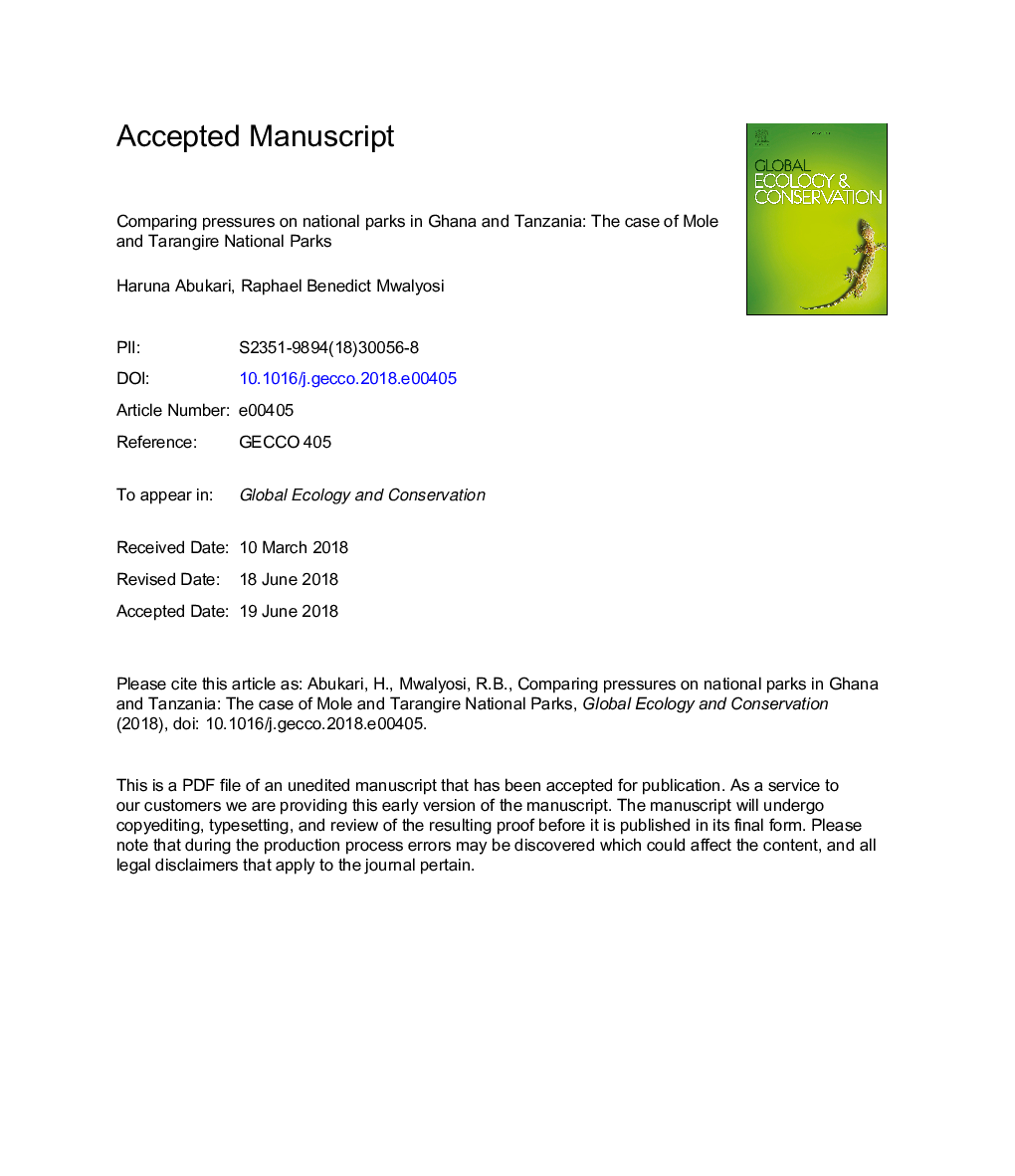| Article ID | Journal | Published Year | Pages | File Type |
|---|---|---|---|---|
| 8846186 | Global Ecology and Conservation | 2018 | 41 Pages |
Abstract
Protected areas do not have immunity against biodiversity loss as their name may suggest. Different protected areas suffer different pressures based on location and the benefits and services expected from them. This paper tried to identify and compare the pressures and threats on the Mole National Park in Ghana and the Tarangire National Park in Tanzania. A section of the Rapid Assessment and Prioritization of Protected Areas Management (RAPPAM) was used to assess biological importance of, and pressures and threats on, the two parks. Household surveys were used to assess perceptions of respondents on forest and wildlife resources usage. The main pressures identified include poverty and high population density in neighboring communities. These underlying pressures manifest on the parks in the form of poaching, illegal grazing and frequent trespassing. Whilst residents in communities near the Tarangire NP hold the perception that access to forest products in park should be allowed, their counterparts near the Mole NP perceive wildlife to be a resource for their consumption. The two parks were also found to be important conservation sites in their respective countries because they each host IUCN threatened and endangered species and serve as cardinal tourists' destinations. The nature of the main pressures demands national-level action to curb population increase and alleviate poverty in the districts hosting the two national parks. The national action must be geared towards a strong collaboration between the parks and local communities to ensure that local communities offer their full support for conserving resources in the parks. Interventions to create alternative livelihood activities in neighboring communities would be a useful strategy to reduce dependency on forest and wildlife resources.
Related Topics
Life Sciences
Agricultural and Biological Sciences
Ecology, Evolution, Behavior and Systematics
Authors
Haruna Abukari, Raphael Benedict Mwalyosi,
